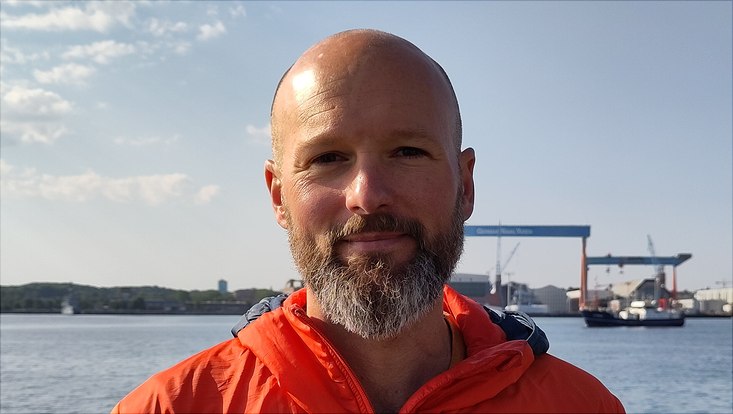Welcome aboard!“I am especially interested in exchange processes between the ocean floor and the ocean.”Prof. Dr. Florian Scholz strengthens the Faculty of Mathematics, Informatics and Natural Sciences and the Center for Earth System Research and Sustainability (CEN).
24 May 2024, by Maria Latos

Photo: Private
Every year, Universität Hamburg welcomes numerous new researchers. This series introduces them and their areas of research. This time: Prof. Dr. Florian Scholz.
Prof. Dr. Florian Scholz joined us in Hamburg from the GEOMAR Helmholtz Centre for Ocean Research Kiel. He holds the W2 professorship for geology, with a focus on bio-geochemistry in the Earth system.
Prof. Scholz, you are a professor of geology with a specialty in bio-geochemistry in the Earth system. Could you describe your research?
As a bio-geochemist, I look at material cycles on Earth, in my case, specifically in the ocean. The cycles of chemical elements, for example, carbon and nitrogen, determine the conditions of life on Earth and operate on different timescales that can extend from a few days and months to years or even millions of years. That means that we are dealing with very complex systems. I am especially interested in exchange processes between the ocean floor and the ocean.
How can we envision these kinds of exchanges?
The ocean floor is, on the one hand, an ultimate sink for many substances in ocean water, but it could also be a source of such substances. Shortly after it is deposited, material dissolves and returns to the ocean or it sticks and disappears from the close-to-the-surface Earth system. Whether that happens depends on environmental conditions, for example, the oxygen content of water near the soil.
Are there specific elements that especially interest you?
Naturally, I am interested in the carbon cycle, but also in trace elements such as iron, which are micro-nutrients and which thus influence the carbon cycle.
So your goal is to develop models for the cycles, right?
First, we quantify material flows and look at what drives these processes. Of course, however, the next step is to create models of these processes and material flows so that we can understand the dynamics in the Earth system.
Do you conduct your research in certain regions?
In the past, I had already done research in all of the large ocean basins. For example, last year I spent several weeks on a research ship in the Northwest Atlantic off Nova Scotia, where the Labrador Current mixes with the Golf Stream. They are very different currents and their mixing ratios are changing right now due to climate change.
As a father, however, I also find it nice to be able to work closer to home. At the moment, for example, we have a project in the Baltic Sea, in the Bay of Kiel. Every summer, the oxygen here is depleted. Naturally, this is a problem for the ecosystem and potentially also for the local economy. Our goal is to understand how this happens and whether we might even be able to prevent it.
What kind of samples do you take for this and how are they collected?
This depends on the line of inquiry, of course. Usually, we take samples from the ocean floor and in the water columns above it. To do so, we use, for example, a rosette sampler to take samples from the water column at a certain depth so we can gain a chemical profile via the water column. And then we take sediment cores. We cut these into slices and analyze the solid phase and the sample water using chemical and mineralogical methods.
You just spoke about the solid phase: in the department, a few research groups are working in the field of soil science. Will you be cooperating with them?
Exactly, and it is exactly this environment in Hamburg that especially interests me. Many ocean researchers are very ocean-focused. But the sediments on the ocean floor naturally have a prior history on land. To study how environmental changes on land and in the ocean are connected, I would like to use the opportunity to work together with the soil science colleagues. And the geosciences program is also a possibility for illuminating interactions between material cycles on land and in the ocean.
Do you already have concrete plans for lectures or perhaps even excursions for the degree programs?
Naturally, I would represent my own field, bio-geochemistry, and offer lectures in the bachelor’s and master’s programs. I have also already requested ship time to teach master’s students the most important methods of marine bio-geochemistry on a research ship in the Baltic Sea. The beautiful thing about the Baltic Sea is that we can demonstrate very different processes and environmental conditions in a relatively small space. For example, there are oxygen-free regions or places where the groundwater leaks on the ocean floor. Manganese nodules that are vital to raw material extraction also form in the Baltic Sea. Thanks to this diversity, the Baltic Sea is an exciting research region and I would like to show that to my students.


